The result of collaboration between the director Marcel Carné and Jacques Prévert poet in the script, with music by Maurice Jaubert with staging a theatrical feature, couldn't result in more than a typical sample called "poetic realism". "Hotel du Nord" is, therefore, one of the key works within this ism artistic.
As its title announces, the hotel grounds, with its revisited rooms, is the real protagonist of the movie, since most of the action takes place in or nearby the famous parisian establishment, on the banks of the Seine. This is to highlight the very applied photography and staging, which bustles all human microcosm, with their different psychologies.
From my point of view, which weakens the script more about the study of personalities would be precisely in the same axis, in the couple of young lovers who serves as a link, frame story, the film . Their love story seems very confusing and ambiguous, fails to penetrate sufficiently. Especially considering the usual hyper-romanticism that usually characterizes such relationships in various collaborations Carné-Prévert. Despite the above, which run parallel stories, including those of the other couples (Arletty-Jouvet well above) take their important space and balance the product to the optimum. Here is where the story becomes more density, supported by some unforgettable scenery as in the sequence inside the room, crowded with workers, or the festival and dance in the courtyard held on 14 July.
Evergreen Cinema, halfway between the lyrical more refined and manners more populist.
Hotel du Nord (1938)
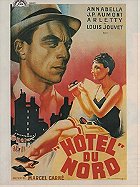 Posted : 13 years, 3 months ago on 6 February 2012 03:09
(A review of Hôtel du Nord (1938))
Posted : 13 years, 3 months ago on 6 February 2012 03:09
(A review of Hôtel du Nord (1938)) 0 comments, Reply to this entry
0 comments, Reply to this entry
Poison (1991)
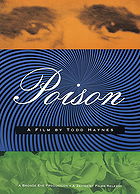 Posted : 13 years, 3 months ago on 5 February 2012 01:26
(A review of Poison)
Posted : 13 years, 3 months ago on 5 February 2012 01:26
(A review of Poison)Movie at the time of its release, caused a stir, with its attendant inflammatory harangues, in the most puritanical of American society, that is, almost everyone.
Comprised of three seemingly unrelated stories, of unequal interest, interspersed and molds are entirely different aesthetic, "Hero", presented as a documentary, focuses on a boy who kills her abusive stepfather and flies out the window to disappear into the sky. In "Horror", a parody of black and white films of series B 50, a scientist isolate the sexual instinct and after mistakenly drinking becomes a monster pustulent. "Homo", based on a story by Jean Genet, is the most controversial of the three stories. In it, a young reunited in prison reformatory by a fellow who feels a strange attraction, whose key is found in an ancient scene victimization.
"Poison" explores the headlong rush of three unusual beings and abandoned in an aggressive environment who has injected the sexual drive, one way or another, a poison that causes them to suffer marginalization and rejection of a world that does not tolerate the difference.
The assembly is the least confusing, especially at first, the viewer will cost warned not understand that attends three stories with no relation between them as they will not be assembled piece by piece (yes, from beginning to end, no regrettable as the irreversibility experiments). Although his vision is not, mainly because it's all just discussed-digestible, must flatter the courage of Todd Haynes, its maker, addressing issues involved (taboo for some), no easy or complacent in his first film.
Genet's brilliant phrase that opens the film is a treatise of principles:
"The whole world is dying of panicky fright" ... there is more to do a translation to the current economic/social development of these times.
Comprised of three seemingly unrelated stories, of unequal interest, interspersed and molds are entirely different aesthetic, "Hero", presented as a documentary, focuses on a boy who kills her abusive stepfather and flies out the window to disappear into the sky. In "Horror", a parody of black and white films of series B 50, a scientist isolate the sexual instinct and after mistakenly drinking becomes a monster pustulent. "Homo", based on a story by Jean Genet, is the most controversial of the three stories. In it, a young reunited in prison reformatory by a fellow who feels a strange attraction, whose key is found in an ancient scene victimization.
"Poison" explores the headlong rush of three unusual beings and abandoned in an aggressive environment who has injected the sexual drive, one way or another, a poison that causes them to suffer marginalization and rejection of a world that does not tolerate the difference.
The assembly is the least confusing, especially at first, the viewer will cost warned not understand that attends three stories with no relation between them as they will not be assembled piece by piece (yes, from beginning to end, no regrettable as the irreversibility experiments). Although his vision is not, mainly because it's all just discussed-digestible, must flatter the courage of Todd Haynes, its maker, addressing issues involved (taboo for some), no easy or complacent in his first film.
Genet's brilliant phrase that opens the film is a treatise of principles:
"The whole world is dying of panicky fright" ... there is more to do a translation to the current economic/social development of these times.
 0 comments, Reply to this entry
0 comments, Reply to this entry
After Life (1998)
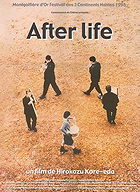 Posted : 13 years, 3 months ago on 5 February 2012 12:28
(A review of After Life (1998))
Posted : 13 years, 3 months ago on 5 February 2012 12:28
(A review of After Life (1998))I start this review by saying that, to me, is the director Koreeda most important recent Japanese cinema and going farther east. May not have a style as recognizable as in the case of other colleagues, but his film is rich in proposals, always stimulating and far-reaching.
Leaving aside personal beliefs, "After Life" is an interesting reflection on life after death. His base argument does not offer any sort of "saves". It seems that all players are in a kind of purgatory, where those who might play the role of angels are also subject to their particular atonement. Beyond Earth but terrestrial, recognizable in the form (a dilapidated building like a school) is the space where all the action of the film. Full chaired by a snowy environment, cold, without apparent emotion, but with an argument as warm as embers of passion still lurking in the interior even of those heavenly beings condemned to their thankless task.
Paced content, but well sustained, the film is reeled proposals is slipping offering suggestions of all kinds, without falling at any time in manichaeism or easy solutions or interpretations, let alone in stylistic grandstanding, which is much appreciated.
Very original reflections on life and the world of life and time spent, memory, and not so much about death, but it rests the base of the action. The proposed offering is exciting and come to ask: ...are you going to wait to let pass without great emotions of life, without great moments?
Leaving aside personal beliefs, "After Life" is an interesting reflection on life after death. His base argument does not offer any sort of "saves". It seems that all players are in a kind of purgatory, where those who might play the role of angels are also subject to their particular atonement. Beyond Earth but terrestrial, recognizable in the form (a dilapidated building like a school) is the space where all the action of the film. Full chaired by a snowy environment, cold, without apparent emotion, but with an argument as warm as embers of passion still lurking in the interior even of those heavenly beings condemned to their thankless task.
Paced content, but well sustained, the film is reeled proposals is slipping offering suggestions of all kinds, without falling at any time in manichaeism or easy solutions or interpretations, let alone in stylistic grandstanding, which is much appreciated.
Very original reflections on life and the world of life and time spent, memory, and not so much about death, but it rests the base of the action. The proposed offering is exciting and come to ask: ...are you going to wait to let pass without great emotions of life, without great moments?
 0 comments, Reply to this entry
0 comments, Reply to this entry
Time (2006)
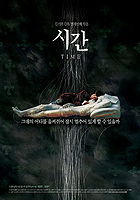 Posted : 13 years, 3 months ago on 5 February 2012 10:54
(A review of Time)
Posted : 13 years, 3 months ago on 5 February 2012 10:54
(A review of Time)"Time" is a new foray Ki-Duk in his usual cinematography, depicting youth possessed by an amour fou that exceeds, sometimes, the imagination.
The movie can be divided in two parts, according to their level of interest. The first half is quite rich in suggestions and is a violent kind of introduction to a history dominated by passion and desire, translated into insanely jealous unchained act as inevitable the couple's romantic tragedy. The last quarter of "Time" suggestive ruins the original proposal in his acrobatic stunt, too gimmicky and repetitive, also including a link or connection predictable from beginning to end, as if it were impossible to escape the spider's web in which the loving young couple is involved. Even the staging seem to refer to such "conviction", repeating physical space, more frequently as the film progresses, thus articulating otherwise, the impossibility of loving couple. While this resource may also involve the viewer in that impasse faced by players in practice is a loss in the form of a bore.
Despite this daring style typical of the naive who usually propose some oriental cinema, also highlight the message is clear, sharp criticism that the film goes on excessive valuation that is given to physical appearance through the use and abuse is done in today's society of plastic surgery.
The movie can be divided in two parts, according to their level of interest. The first half is quite rich in suggestions and is a violent kind of introduction to a history dominated by passion and desire, translated into insanely jealous unchained act as inevitable the couple's romantic tragedy. The last quarter of "Time" suggestive ruins the original proposal in his acrobatic stunt, too gimmicky and repetitive, also including a link or connection predictable from beginning to end, as if it were impossible to escape the spider's web in which the loving young couple is involved. Even the staging seem to refer to such "conviction", repeating physical space, more frequently as the film progresses, thus articulating otherwise, the impossibility of loving couple. While this resource may also involve the viewer in that impasse faced by players in practice is a loss in the form of a bore.
Despite this daring style typical of the naive who usually propose some oriental cinema, also highlight the message is clear, sharp criticism that the film goes on excessive valuation that is given to physical appearance through the use and abuse is done in today's society of plastic surgery.
 0 comments, Reply to this entry
0 comments, Reply to this entry
A Ship to India (1947)
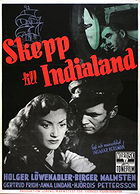 Posted : 13 years, 3 months ago on 3 February 2012 11:57
(A review of A Ship to India)
Posted : 13 years, 3 months ago on 3 February 2012 11:57
(A review of A Ship to India)Third feature in the work of Ingmar Bergman, even in the early '40s. In "A Ship to India" is already clear warning traits, imprinting scenic and obsessions of its director: excellent use of light and shadow play, recurring use of flashbacks, conflicting Background Family Relationships ...
To all this add what I consider a hindrance, as is the theatrical treatment of an important part of his movies, including this one, also based on a play. Although this is my personal taste, that I just do not like me too much of the Bergman film, this excessive elongation of some sequences, always indoors, where they usually occur pointless speeches of his cinematography.
Otherwise, all suggest correction. "A Ship to India" and outlines all the great, partly already mentioned, the Swedish director's films, including his approach to his deep psychological studies of film characters. A fine example of sophisticated simplicity.
Curiously, warn of Bergman's cameo in the film. Appears next to a hat circus "Kasper Teater."
To all this add what I consider a hindrance, as is the theatrical treatment of an important part of his movies, including this one, also based on a play. Although this is my personal taste, that I just do not like me too much of the Bergman film, this excessive elongation of some sequences, always indoors, where they usually occur pointless speeches of his cinematography.
Otherwise, all suggest correction. "A Ship to India" and outlines all the great, partly already mentioned, the Swedish director's films, including his approach to his deep psychological studies of film characters. A fine example of sophisticated simplicity.
Curiously, warn of Bergman's cameo in the film. Appears next to a hat circus "Kasper Teater."
 0 comments, Reply to this entry
0 comments, Reply to this entry
Terribly Happy (2008)
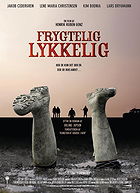 Posted : 13 years, 3 months ago on 2 February 2012 11:55
(A review of Terribly Happy)
Posted : 13 years, 3 months ago on 2 February 2012 11:55
(A review of Terribly Happy)Surprising from its title -which seems to announce any crazy comedy- this danish vibrant thriller is a very pleasant surprise, full of interest.
The story shows a young policeman from Copenhagen who has just been temporarily assigned as a commissioner to Skarrild, a small and isolated population of Jutland. This as a way to purge a free kick in his own family's past. Indeed, his troubled relationship with another family in the village, trigger a series of unexpected events.
The pace of the movie is maintained at all times, supported by some compelling performances (excellent Kim Bodnia) and plot twists continued to enrich it by introducing new readings to a narrative full of suggestions. At times it reminded me of another great film "Blood Simple" (1984), the Coen brothers, for his black humor and similar malicious violence. In this regard, the atmosphere of the landscape and even the locals Skarrild, some with cowboy hat, and the places they frequent, seem rather removed from any point in the American heartland more than northern Europe.
In any event, viewing highly recommended film.
The story shows a young policeman from Copenhagen who has just been temporarily assigned as a commissioner to Skarrild, a small and isolated population of Jutland. This as a way to purge a free kick in his own family's past. Indeed, his troubled relationship with another family in the village, trigger a series of unexpected events.
The pace of the movie is maintained at all times, supported by some compelling performances (excellent Kim Bodnia) and plot twists continued to enrich it by introducing new readings to a narrative full of suggestions. At times it reminded me of another great film "Blood Simple" (1984), the Coen brothers, for his black humor and similar malicious violence. In this regard, the atmosphere of the landscape and even the locals Skarrild, some with cowboy hat, and the places they frequent, seem rather removed from any point in the American heartland more than northern Europe.
In any event, viewing highly recommended film.
 0 comments, Reply to this entry
0 comments, Reply to this entry
The Trial of the Joan of Arc (1962)
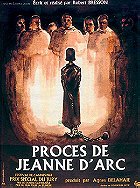 Posted : 13 years, 3 months ago on 1 February 2012 12:14
(A review of The Trial of Joan of Arc)
Posted : 13 years, 3 months ago on 1 February 2012 12:14
(A review of The Trial of Joan of Arc)Although the historic confrontation between the young visionary Joan of Arc with some of the most intransigent curia of his time (which is saying ...!) has been brought to the screen many times, the treatment has been given has been almost always, at least, correct.
"Procès de Jeanne d'Arc" is the struggle for the survival of an innocent, and the struggle between different religious factions and, above all, a struggle for political and religious powers.
After Dreyer's film "The Passion of Joan of Arc" (1928), which I believe, like many others, the best version on the subject, Bresson's work (1962) I think the best achieved. First of all, as also occurs in Dreyer's film is welcome, expressive and scenic sobriety, avoiding the rough, and focusing on the ideological background of what is represented. A sign at the beginning of the film and says that it has complied with textual fidelity as its protagonists exposed during interrogation and the process, subject to the acts and documents preserved from that time.
Another interesting aspect may be the rigid-both gestural and verbal, of the clergy in contrast to the sweetness and physical helplessness of Joan. Similarly, it is also interesting to assess the levels of detail (ubiquitous shackles and chains, the robe enforceable as veritable straightjacket, personal items thrown into the fire ...); any other element has been subjected to formal maximum clearance, including the few sober and small spaces where the action unfolds.
To finish and delving into the latter, the last minutes of the film, showing the sequence of execution, and alone justify a viewing of this almost half length. This develops the best of what already stated in terms of planning, monitoring and exposure and accumulation of significant details.
"Procès de Jeanne d'Arc" is the struggle for the survival of an innocent, and the struggle between different religious factions and, above all, a struggle for political and religious powers.
After Dreyer's film "The Passion of Joan of Arc" (1928), which I believe, like many others, the best version on the subject, Bresson's work (1962) I think the best achieved. First of all, as also occurs in Dreyer's film is welcome, expressive and scenic sobriety, avoiding the rough, and focusing on the ideological background of what is represented. A sign at the beginning of the film and says that it has complied with textual fidelity as its protagonists exposed during interrogation and the process, subject to the acts and documents preserved from that time.
Another interesting aspect may be the rigid-both gestural and verbal, of the clergy in contrast to the sweetness and physical helplessness of Joan. Similarly, it is also interesting to assess the levels of detail (ubiquitous shackles and chains, the robe enforceable as veritable straightjacket, personal items thrown into the fire ...); any other element has been subjected to formal maximum clearance, including the few sober and small spaces where the action unfolds.
To finish and delving into the latter, the last minutes of the film, showing the sequence of execution, and alone justify a viewing of this almost half length. This develops the best of what already stated in terms of planning, monitoring and exposure and accumulation of significant details.
 0 comments, Reply to this entry
0 comments, Reply to this entry
Aurora de esperanza (1937)
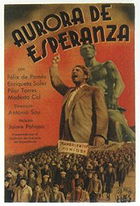 Posted : 13 years, 3 months ago on 31 January 2012 12:07
(A review of Aurora de esperanza)
Posted : 13 years, 3 months ago on 31 January 2012 12:07
(A review of Aurora de esperanza)"Dawn of Hope" (1937) is a film made by Antonio Sau for the anarchist union the CNT and is also one of the most important social films made in Spain. Keep in mind that was filmed at the beginning of the Spanish Civil War, when the revolutionary impulse still held firm.
In this respect, tells the story of John, a worker who has just become unemployed, their effort to get a new, impossible to work in a country with more than three million unemployed at the time, as it says in the film. John's wife also takes a humiliating job to feed their children. Outraged by this and seeing the conformism of the people, John ends up as a social agitator.
The film participates, then, in every sense, the revolutionary process and the subsequent phenomenon introduced by the union collectivized anarchist in July 1936. With this in mind, the heavy burden and its radical pamphlet form to display any kind of social relationship, as concrete is justified by political and social circumstances.
The interest, tax evasion between film (a little, actually) and social document firsthand is more than true.
In this respect, tells the story of John, a worker who has just become unemployed, their effort to get a new, impossible to work in a country with more than three million unemployed at the time, as it says in the film. John's wife also takes a humiliating job to feed their children. Outraged by this and seeing the conformism of the people, John ends up as a social agitator.
The film participates, then, in every sense, the revolutionary process and the subsequent phenomenon introduced by the union collectivized anarchist in July 1936. With this in mind, the heavy burden and its radical pamphlet form to display any kind of social relationship, as concrete is justified by political and social circumstances.
The interest, tax evasion between film (a little, actually) and social document firsthand is more than true.
 0 comments, Reply to this entry
0 comments, Reply to this entry
Echo (Ekko) (2007)
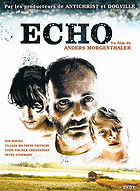 Posted : 13 years, 3 months ago on 31 January 2012 10:18
(A review of Ekko)
Posted : 13 years, 3 months ago on 31 January 2012 10:18
(A review of Ekko)The plot is as follows: Simon is a divorced police officer who recently lost custody of her six years. In desperation, he abducts his son and takes him to a summer house where they hide.
The film becomes a story of intrigue (tensions in the present time) with moments of terror (the past, who returns ...). Although the story is not too original, it is certain that "hook" from the beginning. With only two characters, Anders Morgenthaler - in whom some critics have seen a Haneke-fills new history content, adding spoilers, and soon we realize that the stay of father and son can not be anything pleasant.
The worst fit in the whole film is the accompaniment horrísono, louder than music, which accompanies certain sequences of continuity and some inappropriate sound effects, which only help to confuse and break the viewer's attention. Nevertheless, it is entertaining, thanks to his pace, agile and well maintained, and a mounting with little cracks, convinced at all times. Also his final credible, very credible, and flees from grandstanding, which is much appreciated.
Also review the more than acceptable performance from his actors, especially the major players of the same.
The film becomes a story of intrigue (tensions in the present time) with moments of terror (the past, who returns ...). Although the story is not too original, it is certain that "hook" from the beginning. With only two characters, Anders Morgenthaler - in whom some critics have seen a Haneke-fills new history content, adding spoilers, and soon we realize that the stay of father and son can not be anything pleasant.
The worst fit in the whole film is the accompaniment horrísono, louder than music, which accompanies certain sequences of continuity and some inappropriate sound effects, which only help to confuse and break the viewer's attention. Nevertheless, it is entertaining, thanks to his pace, agile and well maintained, and a mounting with little cracks, convinced at all times. Also his final credible, very credible, and flees from grandstanding, which is much appreciated.
Also review the more than acceptable performance from his actors, especially the major players of the same.
 0 comments, Reply to this entry
0 comments, Reply to this entry
Aglaée (2010)
 Posted : 13 years, 3 months ago on 30 January 2012 03:25
(A review of Aglaée)
Posted : 13 years, 3 months ago on 30 January 2012 03:25
(A review of Aglaée)Rudi Rosenberg, director of this film, made his acting debut while still a child in small roles in both film-and television-before turning to management, as two short films. In both films explore the world of adolescence. The first, "13 ans", filmed in 2008 with child actors and comedic, like a draft "Aglaee" held two years later. In the latter, the complexity of older characters in his mid-teens, offers greater narrative content.
"Aglaee" part of a fact only apparently trivial. This is a group of guys who improvises a bet in the courtyard of the institute, with the sole intention of having fun but, this time, take as its subject a classmate with a physical disability.
Supported by the effective and credible long interpretative work of its young actors, the film made a laborious study of their different personalities, that age when the permeability becomes clearer sentimental and emotional vulnerability is much greater than any other. but this does not mean that the film falls into any kind of easy sentimentality or moralizing, a more adult. On the contrary, "Aglaee" takes a surprising plot twist at the end of its 20 minutes, showing that the adolescent's psychological complexity is no sign of weakness or confusion of life, and that under the skin of his actors is teeming, brimming with sensations, a humanity in full transformation.
"Aglaee" part of a fact only apparently trivial. This is a group of guys who improvises a bet in the courtyard of the institute, with the sole intention of having fun but, this time, take as its subject a classmate with a physical disability.
Supported by the effective and credible long interpretative work of its young actors, the film made a laborious study of their different personalities, that age when the permeability becomes clearer sentimental and emotional vulnerability is much greater than any other. but this does not mean that the film falls into any kind of easy sentimentality or moralizing, a more adult. On the contrary, "Aglaee" takes a surprising plot twist at the end of its 20 minutes, showing that the adolescent's psychological complexity is no sign of weakness or confusion of life, and that under the skin of his actors is teeming, brimming with sensations, a humanity in full transformation.
 0 comments, Reply to this entry
0 comments, Reply to this entry
 Login
Login
 Home
Home 187 Lists
187 Lists 208 Reviews
208 Reviews Collections
Collections